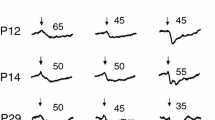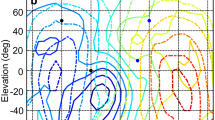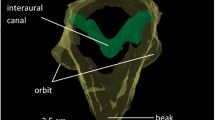Abstract
Absolute thresholds and critical masking ratios were determined behaviorally for the European barn owl (Tyto alba guttata). It shows an excellent sensitivity throughout its hearing range with a minimum threshold of −14.2 dB sound pressure level at 6.3 kHz, which is similar to the sensitivity found in the American barn owl (Tyto alba pratincola) and some other owls. Both the European and the American barn owl have a high upper-frequency limit of hearing exceeding that in other bird species. Critical masking ratios, that can provide an estimate for the frequency selectivity in the barn owl's hearing system, were determined with a noise of about 0 dB spectrum level. They increased from 19.1 dB at 2 kHz to 29.2 dB at 8 kHz at a rate of 5.1 dB per octave. The corresponding critical ratio bandwidths were 81, 218, 562 and 831 Hz for test-tone frequencies of 2, 4, 6.3 and 8 kHz, respectively. These values indicate, contrary to expectations based on the spatial representation of frequencies on the basilar papilla, increasing bandwidths of auditory filters in the region of the barn owl's auditory fovea. This increase, however, correlates with the increase in the bandwidths of tuning curves in the barn owl's auditory fovea.
Similar content being viewed by others
Author information
Authors and Affiliations
Additional information
Accepted: 27 November 1997
Rights and permissions
About this article
Cite this article
Dyson, M., Klump, G. & Gauger, B. Absolute hearing thresholds and critical masking ratios in the European barn owl: a comparison with other owls. J Comp Physiol A 182, 695–702 (1998). https://doi.org/10.1007/s003590050214
Issue Date:
DOI: https://doi.org/10.1007/s003590050214




